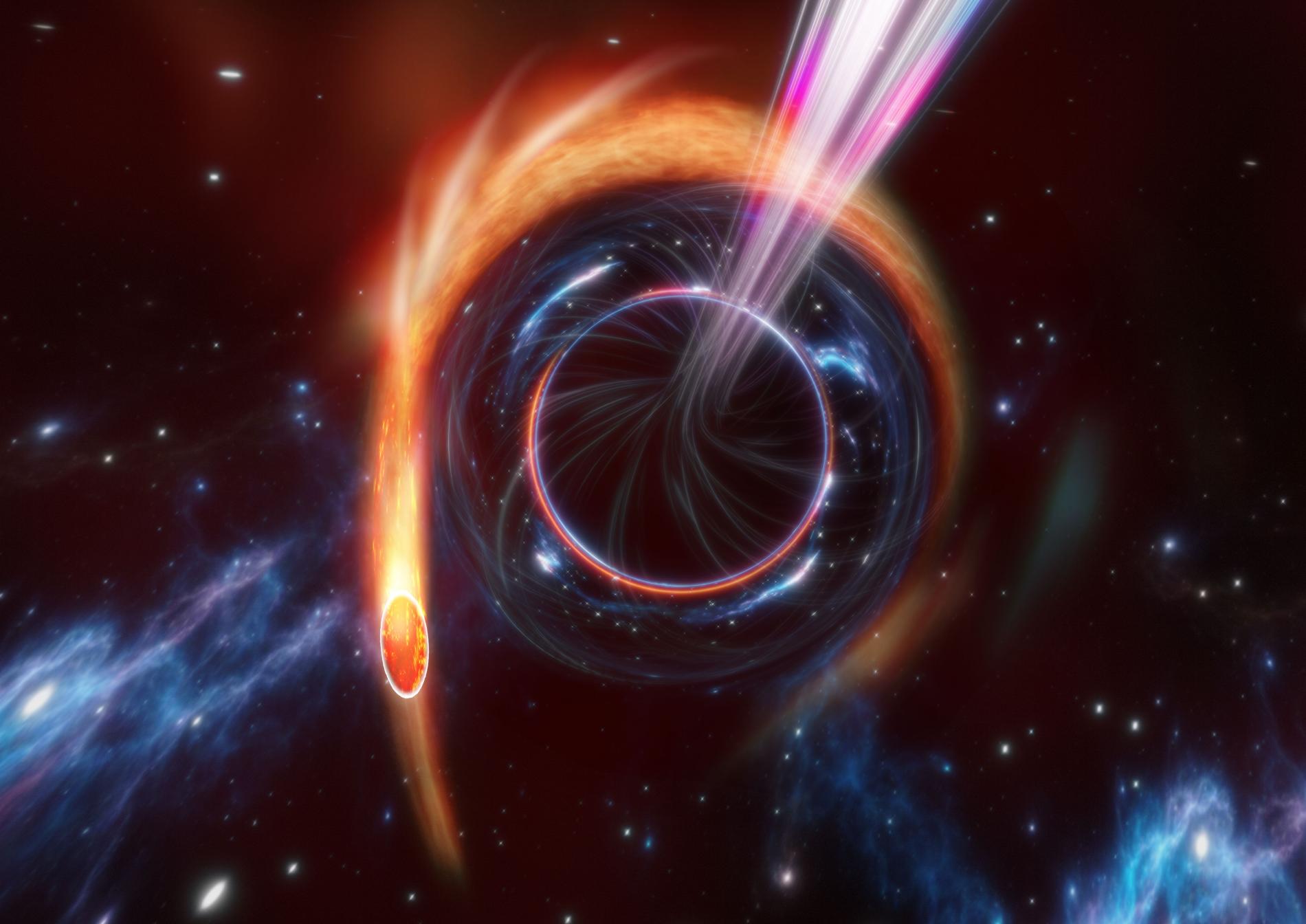Detected a jet of matter emerging from a supermassive black hole as it devours a star
The Institute of Astrophysics of Andalusia (IAA-CSIC) participates in two articles that analyse this very rarely observed phenomenon
In early 2022, the Zwicky Transient Facility observatory detected an extraordinary flash where, the night before, nothing was shining. With an intensity equivalent to a thousand trillion suns, this phenomenon was studied by different scientific groups from numerous observatories and now two articles have been published in Nature and Nature Astronomy, in which the Institute of Astrophysics of Andalusia (IAA-CSIC) participates, and which coincide in the origin of the flash: it is a jet produced by a supermassive black hole devouring a star.
Most galaxies harbour supermassive black holes in their central regions, containing up to billions of times the mass of the Sun. These are objects with a gravitational field so intense that even light cannot escape, and exhibit a structure formed by a disc of gas and dust -the accretion disc- that sucks in material from its surroundings. “Most of the time, however, supermassive black holes do not devour anything", explains Miguel Pérez-Torres, a researcher at the IAA-CSIC who contributed to the Nature Astronomy article. “So, a phenomenon like this, which we know as tidal disruption events, can provide us with a unique opportunity to study the neighbourhood of these powerful objects”.

The scenario is relatively well known: the star is torn apart by the tidal forces of the black hole, becomes part of its disc and ends up being engulfed by it. “However, in some extremely rare cases, the black hole ejects jets of matter that travel almost at the speed of light in the process of destruction and accretion of a star's material", says José Feliciano Agüí Fernández, researcher at the IAA-CSIC and co-author of the paper published in Nature. “Calculations suggest that these jets occur in only 1% of cases, and that is precisely what we observed”.
In fact, the bright flash from the event, called AT2022cmc, is among the brightest ever observed. The source is also the most distant ever detected, some 8.5 billion light-years away. It appears to be at the centre of a galaxy that is not yet visible because the light from AT2022cmc eclipsed it, but when the episode ends it could be imaged by the Hubble or James Webb space telescopes.
How can such a distant event be seen so brightly from the ground? The two papers analysing the phenomenon conclude that the black hole's jet may be pointing directly towards Earth, which makes the signal appear brighter than if the jet were pointing in any other direction. The effect, called "Doppler boosting", is similar to the amplified sound of a passing siren.
However, it is still unknown why some tidal disruption events produce jets and others do not. “Our work suggests that the difference probably lies in how the supermassive black hole rotates, and that a high rotation speed is a necessary ingredient for launching the jets, an idea that brings us closer to understanding the physics of supermassive black holes at the centre of galaxies thousands of light-years away", concludes José Feliciano Agüí Fernández (IAA-CSIC).
I. Andreoni, et al. “A very luminous jet from the disruption of a star by a massive black hole”. Nature, Nov. 2022.
D. R. Pasham, et al. “The birth of a relativistic jet following the disruption of a star by a cosmological black hole”. Nature Astronomy, Nov. 2022. http://www.nature.com/articles/s41550-022-01820-x
Instituto de Astrofísica de Andalucía (IAA-CSIC)
Unidad de Divulgación y Comunicación
Silbia López de Lacalle - sll[arroba]iaa.es - 958230676
https://www.iaa.csic.es
https://divulgacion.iaa.csic.es

